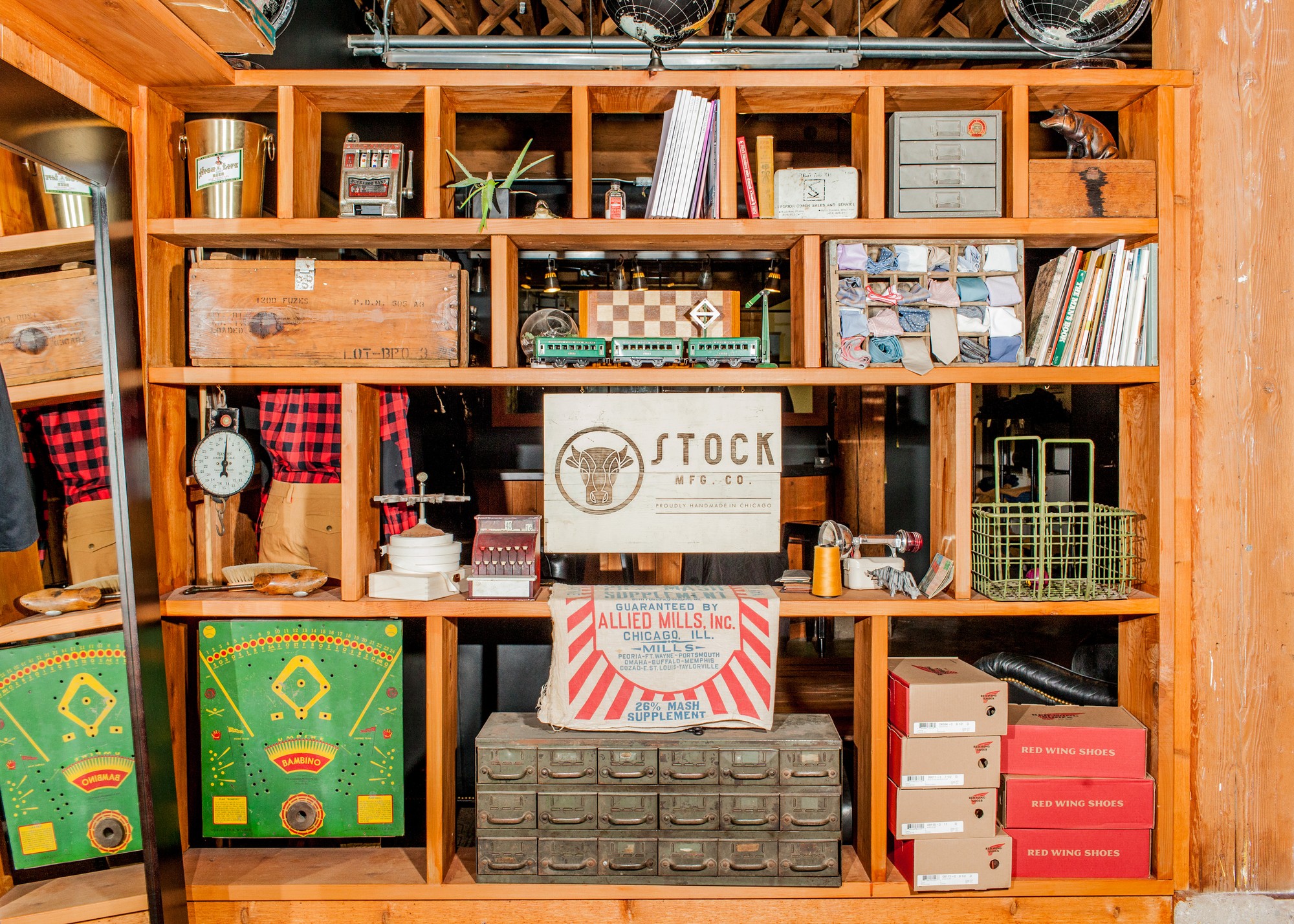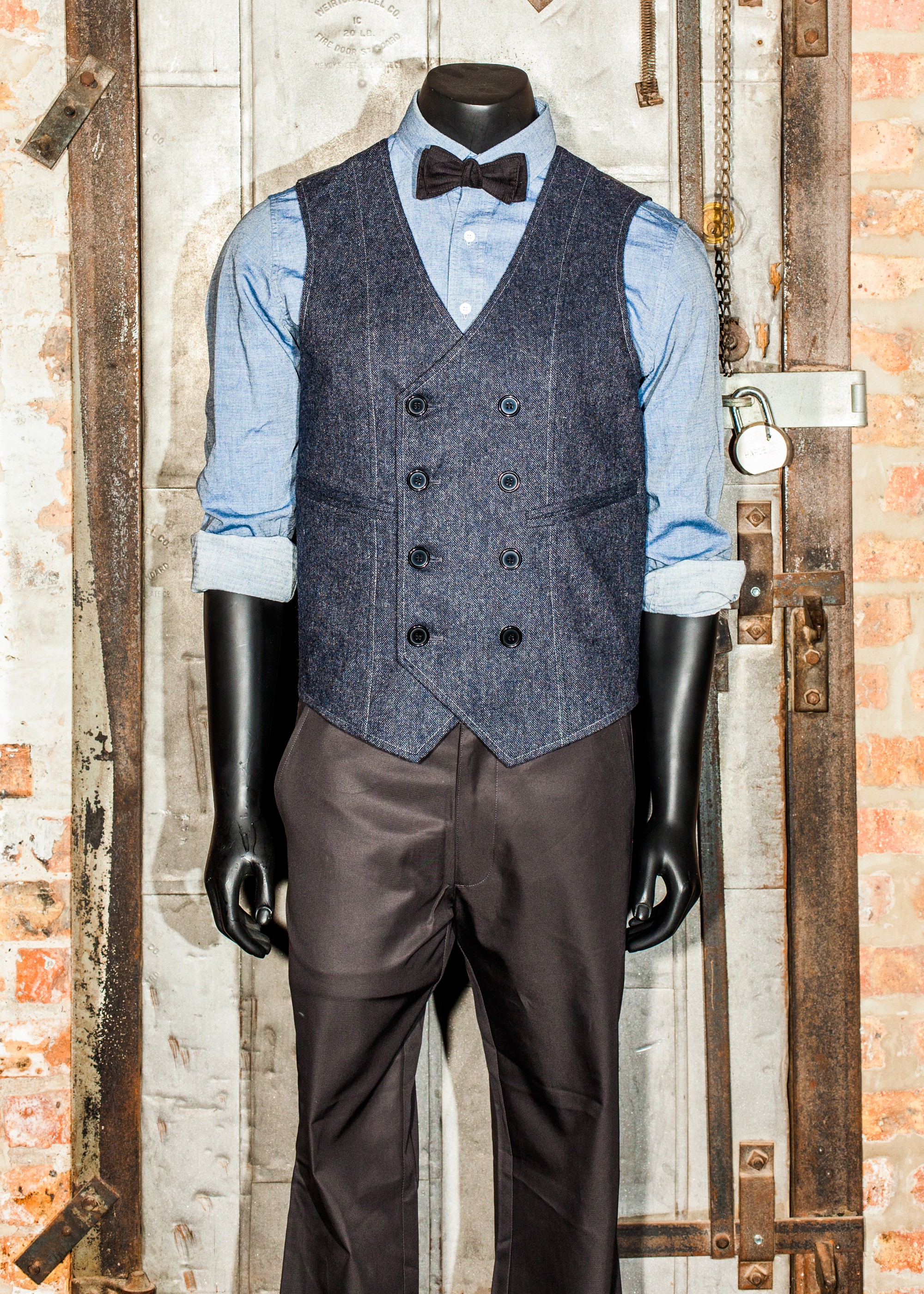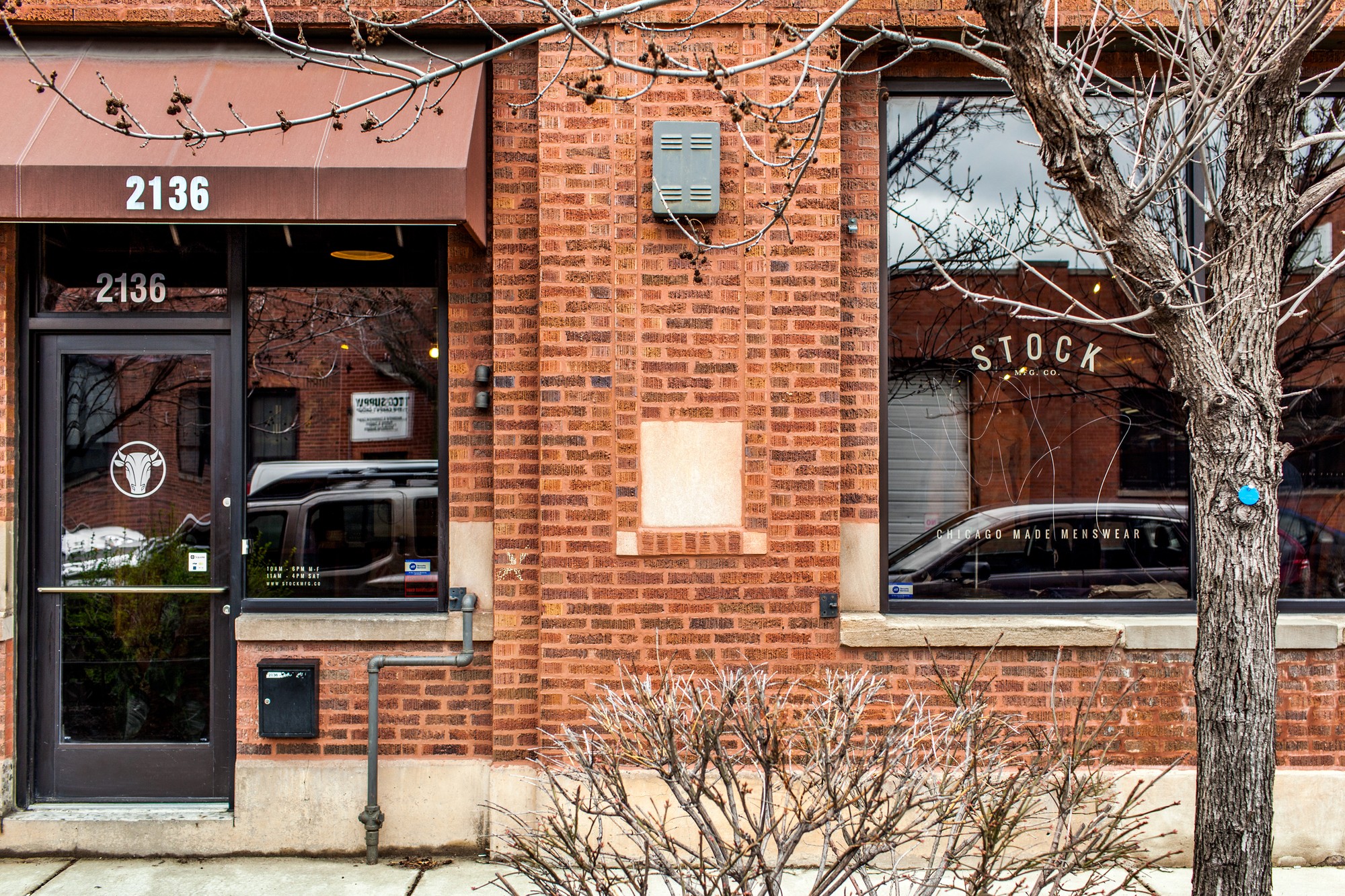Real Talk is our weekly series about the peaks, pitfalls, and perils of the food world. Every week, we’re taking you to the heart of food’s most glamorous (and difficult) projects with the help of our content partner MOO . From pop-up dinners to pop-tart marketing, hyper-local restaurants to global food empires, this is your peek behind the curtains of food & drink’s dreamiest initiatives and get—you guessed it—the real talk.
Soon after they launched as a premium, Chicago-based menswear line, Stock Mfg. Co. began outfitting the staff of some of the city’s most talked about restaurants and hotels, from Momotaro and Soho House , to Chicago Athletic Association and Alinea . Here, co-founder Tim Tierney shares some of his favorite moments in the ideation process, the difference between day and night, and why the walkthrough is key.
as told to Nicole Schnitzler
____________________________
 A scene from Stock MFG Co.’s eclectic office. Photo by Nick Murway
A scene from Stock MFG Co.’s eclectic office. Photo by Nick Murway
Around the time that we were working out the design for our first menswear collection, we met our partners Jim Snediker and Jason Morgan. We all came together and went to Big Star and The Violet Hour and just had a lot of drinks and hashed out some sort of game plan. It took us a few months to build a website and start making menswear.
We started with no money, so we were cutting up old fabric that had been sitting at the factory for decades and making anything that was cheap, like pocket squares and ties. We’d do a run of it, take the money from that to develop something new, then take the money from that project to keep pumping money back into the business.
I went to college with Dave Beran of Next , and he approached me saying they were looking to change the restaurant’s uniforms. At the time they were sourcing something from France that was expensive and that they didn’t really like, so they asked if we could take a stab at the design. We met with the chefs and the servers and looked at the pieces they were wearing and at where they were breaking down. We also talked about what functionality they needed them to have. It was a small project, but when people heard we were making uniforms for Next and Alinea, we had more people reach out, and we took on bigger and bigger projects.
We’d get a huge project like we did for restaurants like Land and Sea and the Chicago Athletic Association deliver it, and then we’d be like “Okay, let’s go back to the Business to Consumer (B2C) stuff and the menswear line.” But before we knew it we’d get another call or email from another big restaurant. They were such good-sized orders that we were really funding the B2C side of our business with Business to Business (B2B) accounts, so eventually we were like, “Well, why are we ignoring this B2B stuff? It seems to be what we’re good at, and there seems to be a pretty big demand for it.”
 An example of Stock MFG Co.’s uniform designs. Photo by Nick Murway
An example of Stock MFG Co.’s uniform designs. Photo by Nick Murway
Each client is really different. Sometimes we’re working with the chef, sometimes we’re working with the server, sometimes we’re working with the manager who’s in the back office and not even in the restaurant. Sometimes we’re dealing with a brand new concept and sometimes we’re working with the second location of an existing restaurant. Our favorite projects are when people are like, “Alright, here’s our concept, make it fun—what can you come up with?”
Soho House was the first account that gave us full reign from the beginning, saying “This is what the club is going to look like, go.” We walked through the space when they were under construction and we came up with an aesthetic based on the interior of the build-out. Then there are accounts like Dineamic Group and Bar Siena , and they know exactly what they want. They’re like, “We want this shirt in this fabric, and we want it to be faded like this.”
For Alinea, they were like, “We want the servers to bring the food and then disappear into the wall.” So everybody is wearing black in there because it’s a dark restaurant. It’s pretty different from, say, the Chicago Athletic Association, where everyone’s running around in baseball joggers made out of khaki with bright red ribbing on them.
If someone has a really specific fabric in mind for a restaurant, I’ll bring in swatches and sometimes they’ll look at them, take them outside and be like, “Oh, I need to see the true colors of this in the light,” but you really don’t. You need to see it in how it will look in a dark restaurant. It’s a totally different thing when it’s midnight and your servers are walking through the venue than when you’re standing outside at noon.

When we work with Boka group , we actually work with the companies who do their interior design; our job is to bring that aesthetic over to the employees on the floor. So for Momotaro we actually got renderings of that space from Avroko and then designed uniforms around that. The ties on their aprons are made of rope, and that mirrors the rope-woven ceiling tapestry that hangs overhead. When we did Game Room , the uniforms really played off of the whole feel of that room. It’s essentially a whole room of bocce, foosball, and pool, so those guys are wearing vintage baseball style joggers and color-block shirts that fit the athletic theme.
Walking through the space is really important. The way someone describes something is not always going to translate to the listener. Being able to walk through and experience something for yourself, you can get inspiration from any sense, whether it’s a feeling or a smell, whereas when someone is explaining something to you you’re just trying to create a picture in your mind. By walking through and using your own senses to take something in, you understand it on a different level.
I sat in on a conversation at Soho House last year with Kevin Boehm and Rob Katz of Boka Group, Donnie Madia of One Off Hospitality , and Jerrod and R.J. Melman of Lettuce Entertain You . When you listen to the process of starting a restaurant you realize just how much it entails, from getting together the team to execute that concept and the travel for the inspiration, to the cuisine and finding the right chef and front of house staff. The Chicago restaurant scene is operating at such a high level that that level of quality and attention to detail can’t help but trickle down to the uniform.
The restaurateur or chef has a very specific vision in their head for how they want to execute their restaurant or hotel and how they want people to perceive that, and seeing how focused they are on the details of that is inspiring because you don’t want to let that person down. That’s their baby, their business, and their livelihood, whether it’s a small, one-off restaurant or one that’s part of a huge billionaire-backed hotel chain.
My sister is a major foodie and she and her boyfriend eat at Alinea a couple of times a year and head to every restaurant in town. It’s funny because she’ll get jealous and be like, “I can’t believe you get to walk through Duck Duck Goat before it’s open.” Getting to be, by default, an insider in this industry is really cool.












